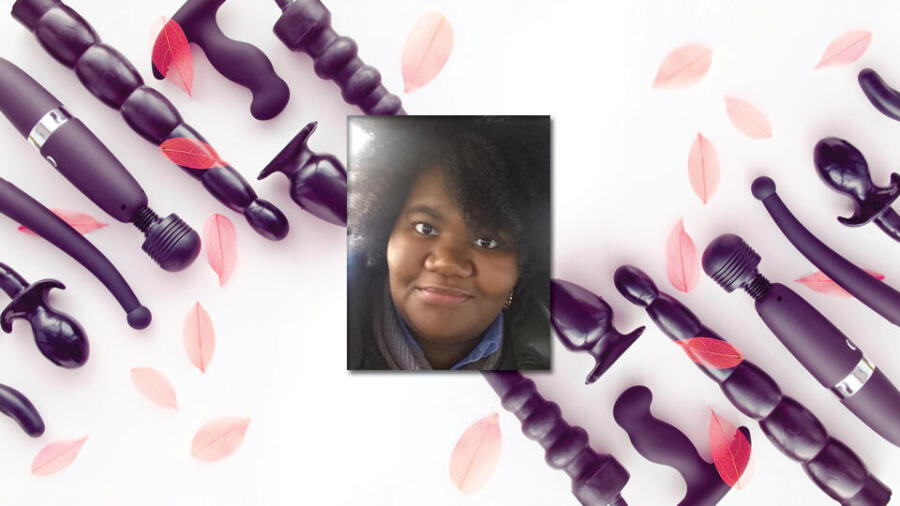Perhaps the biggest difference between running a business 10 years ago and running a business today is the role social media can play in your success. As of 2019, 79 percent of the United States population and 91 percent of businesses had social networking profiles, making the medium extremely effective for connecting not only businesses with potential customers but also businesses with other businesses. Because most marketing has moved to digital platforms and more people rely on social media for news, reviews, and to find new products and services, embracing social media is a no-brainer for savvy stores.
Before I started reviewing sex toys, I was a natural evaluator of things — including everyday products like food, beauty items, and even businesses. I would either be sent a product to review or be hired as a mystery shopper to go in and evaluate an establishment. The idea behind this was that I would be mimicking the customer’s experience from an evaluator’s perspective and I loved it for many reasons — mainly because I enjoyed gaining experience as an informed consumer.
We need sex toy manufacturers to talk about the other aspects that contribute to making orgasms possible.
I was always fascinated by how individuals made purchasing decisions and what influenced their decisions. From there, I decided to take up real estate on the internet and start reviewing products full-time as a way to provide honest feedback on products and services for those seeking such things.
As I entered into the sex toy industry, I noticed many things and learned how sex toy manufacturers and retailers marketed their products. When I first started reviewing sex toys almost four years ago, I noticed that a large plethora of marketing material was geared mainly towards Caucasian and Asian customers in both the American market and overseas in places like Asia and Europe. And while some of it made sense based on demographics, I noticed that people of color, mainly black people where largely left out or marketed to less on a highly disproportionate scale. This bothered me for many reasons.
Aside from being a black woman myself, I felt the lack of representation in marketing to people of color perpetuated the idea that the black community in its near entirety wasn’t interested in pleasure — which can unintentionally contribute to the negative attitudes on sex education and pleasure already existent within the community. When we don’t see people who look like us in mainstream media and ads, we start to believe that we aren’t supposed to enjoy those things being advertised to others, even things as simple as an orgasm.
Within a very small amount of time however, with the help of social media and the widespread demand for diversity from consumers and sex-ed professionals alike, you can’t go anywhere without seeing every color of the rainbow being marketed to — all shapes, sizes, races, orientations and disabled folks. Everyone is included in the conversation around pleasure and it makes me smile knowing that positive conversations around sex education are being had from this, which normalizes sex, pleasure and is slowly aiding in narrowing the pleasure gap.
What is not narrowing the pleasure gap isn’t what we don’t see in the marketing, but what we also see in social media marketing and influencer marketing, which if you don’t know what that is, it’s when a person, sometimes a blogger, or person with a large following markets or advertises a product and how it has benefited them in an attempt to get their followers to buy the product or at least create some buzz around it. I kind of play into the influencer market because I’m a blogger, though I don’t define myself as an influencer because my primary focus is on helping people find sex toys that work for them and their bodies while providing a safe space for positive conversations on sex, mental health and dating.
What bothers me is when sexual wellness products are marketed to consumers as a one-size-fits-all product promising to give you all the orgasms that you thought would only be possible in your wildest dreams. The bone of contention here is that when a sex toy is guaranteed to produce pleasure, it doesn’t only cause consumers to potentially waste their money, it also negates the fact that sensation is subjective and not every toy is for everybody. Saying that a pleasure product will guarantee you immense pleasure is like saying one type of medicine will cure every illness. If that were the case, stocks in the pharmaceutical industry would be in the red.
It’s quite understandable why sex toy manufactures go out of their way to proclaim their products as the next big thing. They simply want to stand out in what can at times be an over-saturated market. The formula is simple: Market a unique toy + guarantee that it’s the greatest thing invented since sliced bread = sales.
What additionally isn’t considered is that some folks experience difficultly achieving an orgasm. This can occur for many reasons, but I personally like to steer clear from labeling anyone “inorgasmic” when talking about a person who has difficulty having an orgasm. Looking beyond that, there are tons of ways an orgasm can occur with or without toys. In fact, I never recommend sex toys to anyone who doesn’t masturbate — especially if they’re buying a sex toy for themselves. After all, how do you get an idea of what type of sensations you like if you don’t have much experience with manual stimulation?
A company guaranteeing that their sex toy will give all of its users an orgasm can be false advertising. It could also give customers the impression that they’re getting some type of experience that can only be had with their toy — while I believe that everyone should have more than one sex toy in their collection, this can also take away from the other factors needed for an orgasm that many manufacturers stray away from in their marketing. We don’t just need body positivity in our advertisements. We also need sex toy manufacturers to talk about the other aspects that contribute to making orgasms possible.
For those experiencing difficulty with having orgasms, companies can also put more marketing emphasis on just enjoying the experience that their products can provide without being goal-oriented towards getting off.
Tiffy Kink is a New York-based sex blogger whose goal is to spread sex positivity and break down barriers for the sexually deprived and repressed. Through her blog, AquaKink.com, Tiffy not only talks about her interactions with sex and masturbation, but she also introduces her readers to body-safe sex toys, sex and dating advice.







